
Epyaxa lucidata is a species of moth in the family Geometridae. It is endemic to New Zealand.

Sabatinca incongruella is a species of moth of the family Micropterigidae. It is endemic to New Zealand and is found only in the northern parts of the South Island. It is a day flying moth and is on the wing from mid January until late February. The larvae of this species feed on liverworts and the adult moths feed on the spores of fern species in the genus Pneumatopteris. This species can be confused with S. chalcophanes as it is very similar in appearance.

Eudonia submarginalis is a species of moth in the family Crambidae. It was described by Francis Walker in 1863. It is endemic to New Zealand.
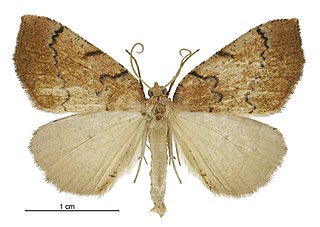
Sestra humeraria, also known as huarau looper, is a species of moth in the family Geometridae. It was described by Francis Walker in 1861. This species is endemic to New Zealand.

Scoparia indistinctalis is a species of moth in the family Crambidae. It is endemic to New Zealand.

Glaucocharis bipunctella is a moth in the family Crambidae. It was described by Francis Walker in 1866. This species is endemic to New Zealand and has been found in the Auckland region, in the southern parts of the North Island and in the Nelson region. It inhabits dense native forest. Larvae of this species have been raised on liverworts. Adults are on the wing in November to January and are attracted to light.

Glaucocharis auriscriptella, also known as the yellow silverling, is a moth in the family Crambidae. It was first described by Francis Walker in 1864 and is endemic to New Zealand. This species can be found in the North, South, Stewart and Great Barrier Islands. The preferred habitat of this moth is lowland and subalpine native forest as well as wetlands. The larvae feed on moss. The adult moth is day flying and is on the wing from November to February. It can be observed in colonies and can be attracted to light at night. This species likely has only one generation per year.

Eudonia sabulosella is a species of moth in the family Crambidae. This species is endemic to New Zealand and is regarded as being common. The larvae of this species are known to damage pasture in New Zealand.
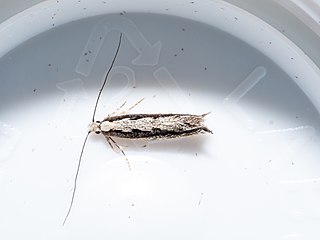
Erechthias fulguritella is a species of moth in the family Tineidae. It was described by Francis Walker in 1863. This species is endemic to New Zealand.

Erechthias terminella is a species of moth in the family Tineidae. It was described by Francis Walker in 1863. This species is endemic to New Zealand.

Eschatotypa derogatella is a species of moth in the family Tineidae. It was described by Francis Walker in 1863. This species is endemic to New Zealand.

Tingena is a genus of the concealer moth family (Oecophoridae). This genus is endemic to New Zealand.
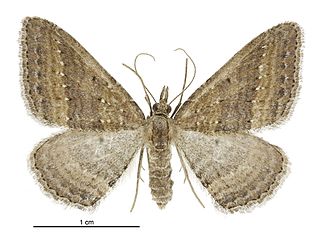
Epyaxa venipunctata is a species of moth in the family Geometridae. It is endemic to New Zealand. This species was first described by Francis Walker in 1863.
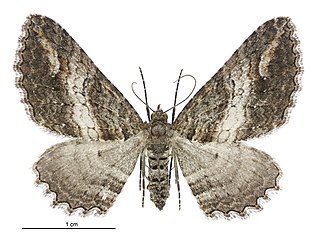
Horisme suppressaria is a moth of the family Geometridae. This species was first described by Francis Walker. Currently the taxonomy of this species is uncertain and as a result this species is also known as Horisme (s.l.) suppressaria. The species is endemic to New Zealand and has been observed in both the North and South Islands. The larval hosts of H. suppressaria are species in the genus Corokia including Corokia cotoneaster.
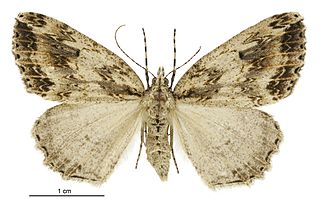
Pseudocoremia rudisata is a species of moth in the family Geometridae. It is endemic to New Zealand.
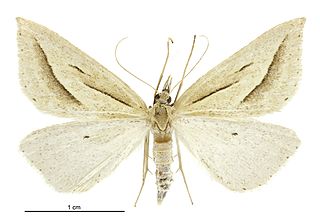
Samana falcatella is a species of moth in the family Geometridae. This species is endemic to New Zealand.
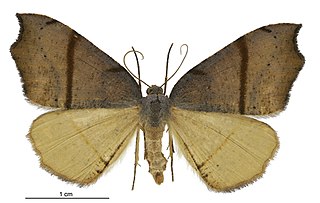
Sestra flexata, also known as the common fern looper, is a species of moth in the family Geometridae. This species is endemic to New Zealand.

Zermizinga indocilisaria is a species of moth in the family Geometridae. It was first described by Francis Walker in 1863. This species found in New Zealand and is said to be found in Tasmania, Australia.

Cnephasia incessana is a species of moth in the family Tortricidae first described by Francis Walker in 1863. However the placement of this species within the genus Cnephasia is in doubt. As a result, this species may be referred to as Cnephasia (s.l.) incessana. This species is endemic to New Zealand.

Prothelymna niphostrota is a species of moth in the family Tineidae first described by Edward Meyrick in 1907. This species is endemic to New Zealand.




















